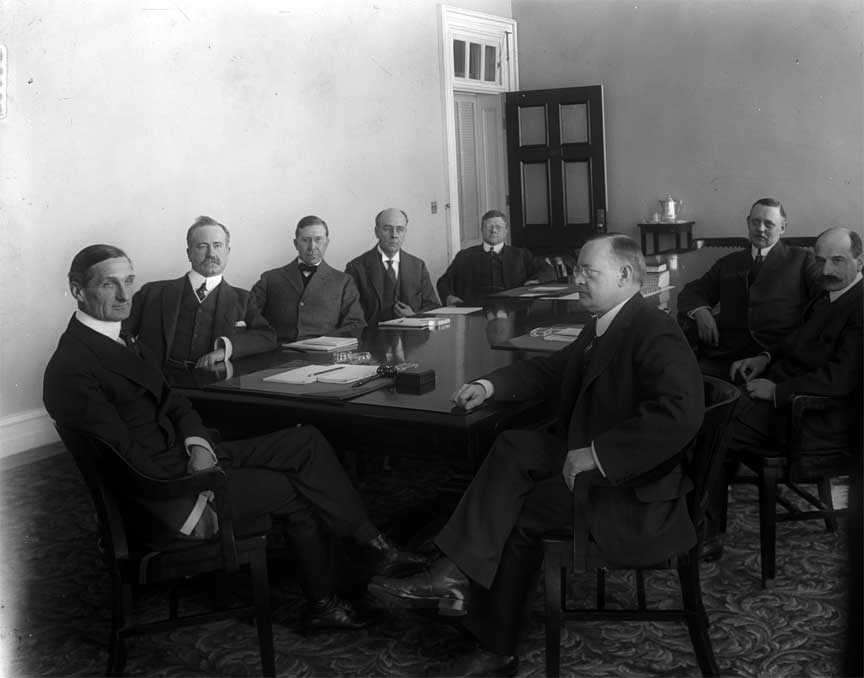Federal Reserve Act

Strong backing of Wilson resulted in the Congress passing a bill creating the Federal Reserve banking system. Under the new law, the country was divided into 12 districts, each with its own federal reserve bank. All of the federal reserve banks would be supervised by the Federal Reserve Commission which would control the money supply.
How to create an effective central banking system for the United States had been a question since the times of Alexander Hamilton. While in the early years of the Republic there had been opposition to giving the central government too much power, the growing industrial power of the United States combined with the many Financial waves of panic made it clear that a solution was necessary. After the Panic of 1907, a National Monetary Commission was established. It recommended the establishment of the Federal Reserve System. Passage of the Federal Reserve Act became a primary goal of the Wilson Administration.
The act passed Congress and was signed into law by President Wilson on December 23, 1913. The Federal Reserve Act of 1913 created the modern banking system as it exists today in the United States. The act was designed to make the banking system more effective in dealing with changing economic situations. It did this by establishing 12 regional banks governed by a board of governors, appointed by the President. The federal banks became bankers' banks. Every national bank was required to maintain part of its money on deposit with the federal banks. The federal reserve banks would then lend money to local banks at interest rates that varied over time. This interest rate became known as the discount rate. Thus, the federal banks could use the discount rate to expand or tighten credit in response to changing economic circumstances.
 >
>